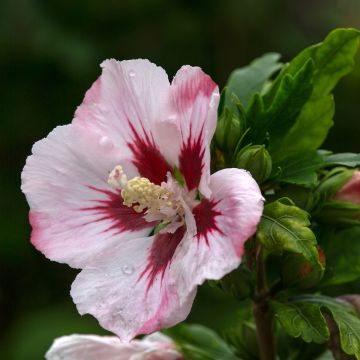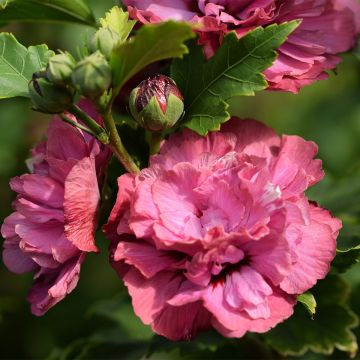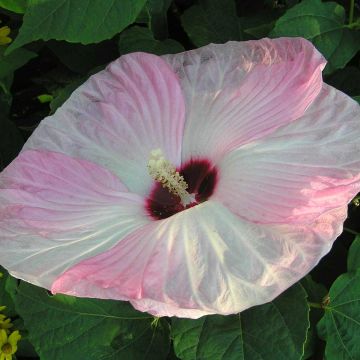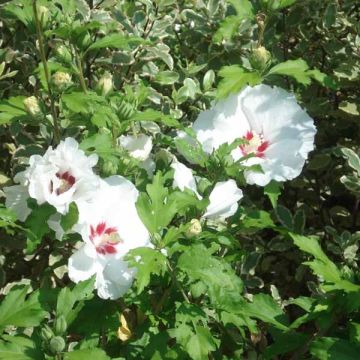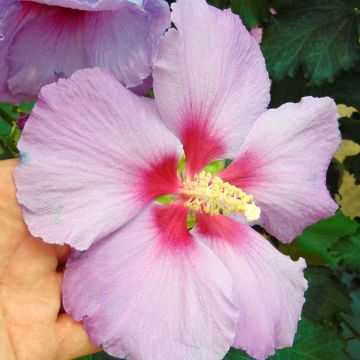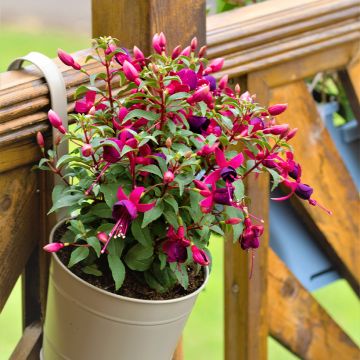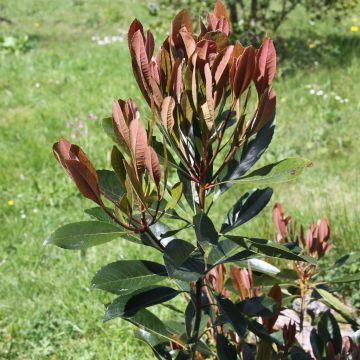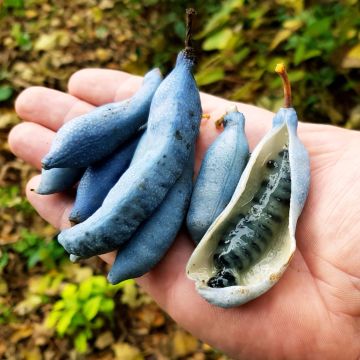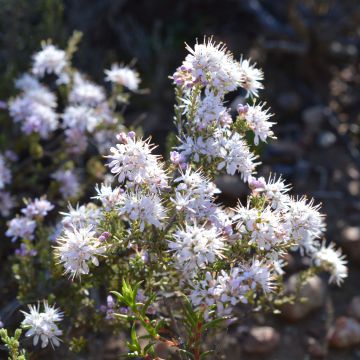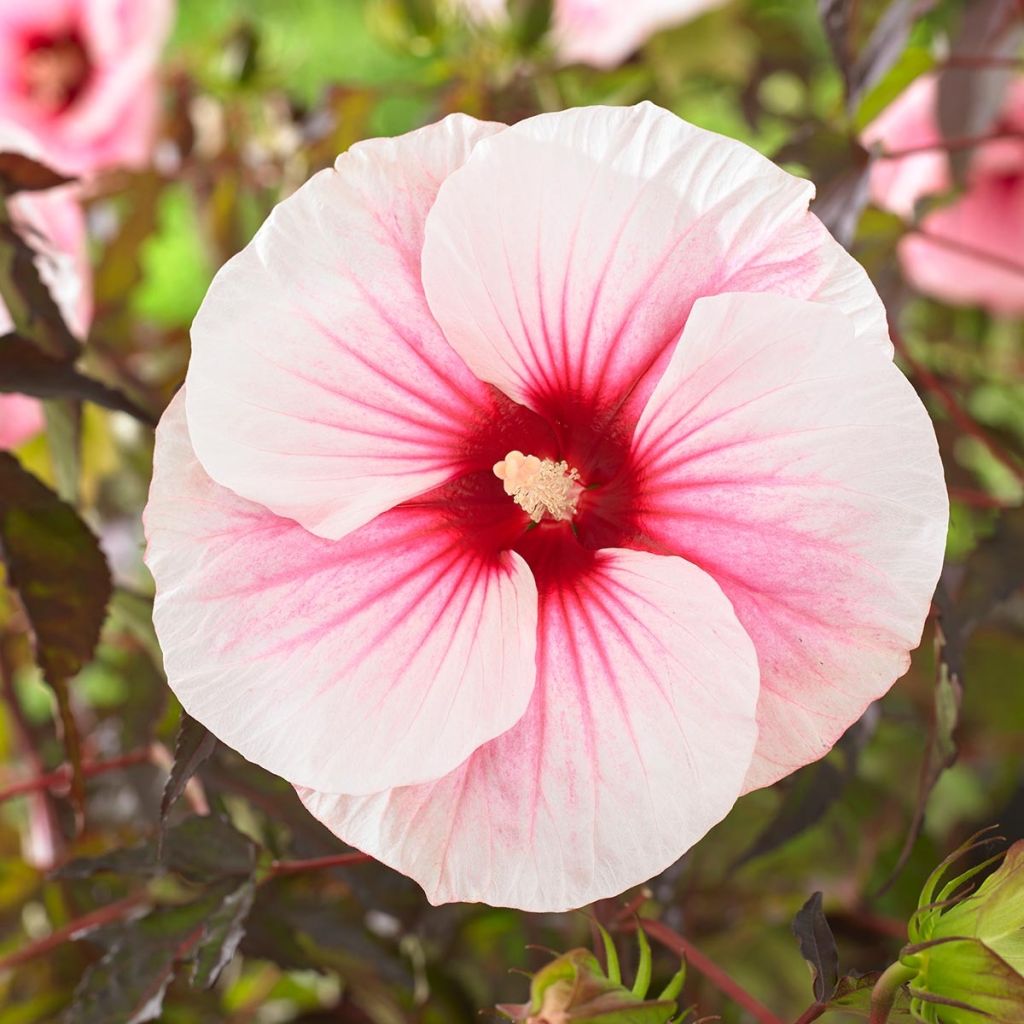

Hibiscus moscheutos Pink Candy - Swamp Rose Mallow
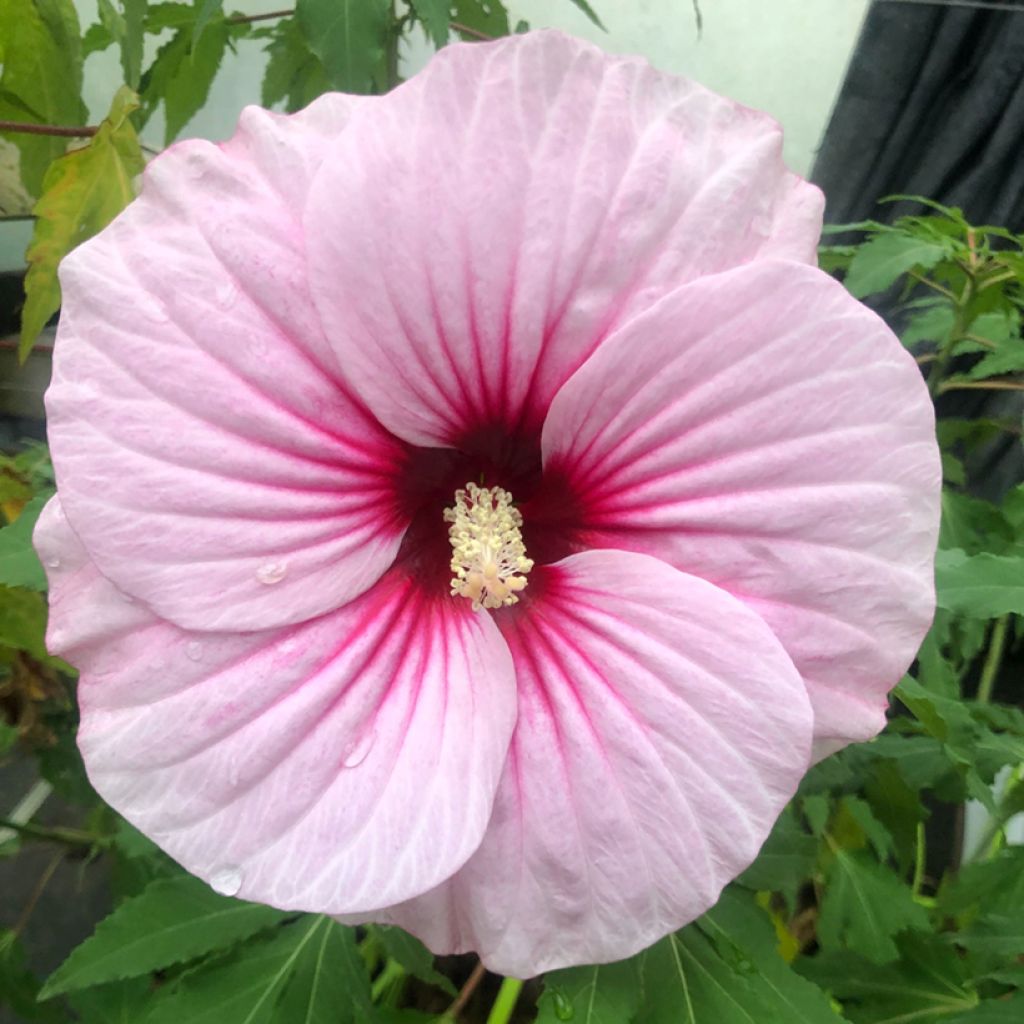

Hibiscus moscheutos Pink Candy - Swamp Rose Mallow
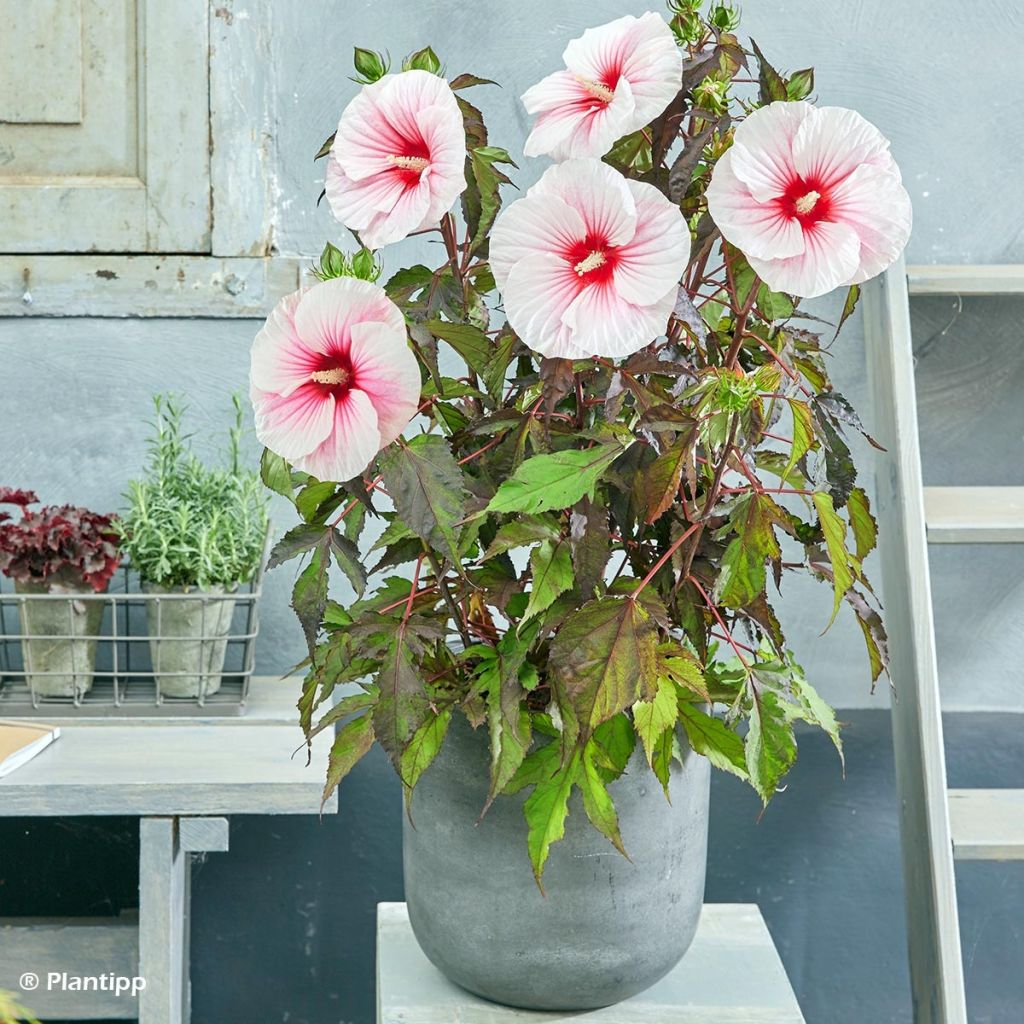

Hibiscus moscheutos Pink Candy - Swamp Rose Mallow
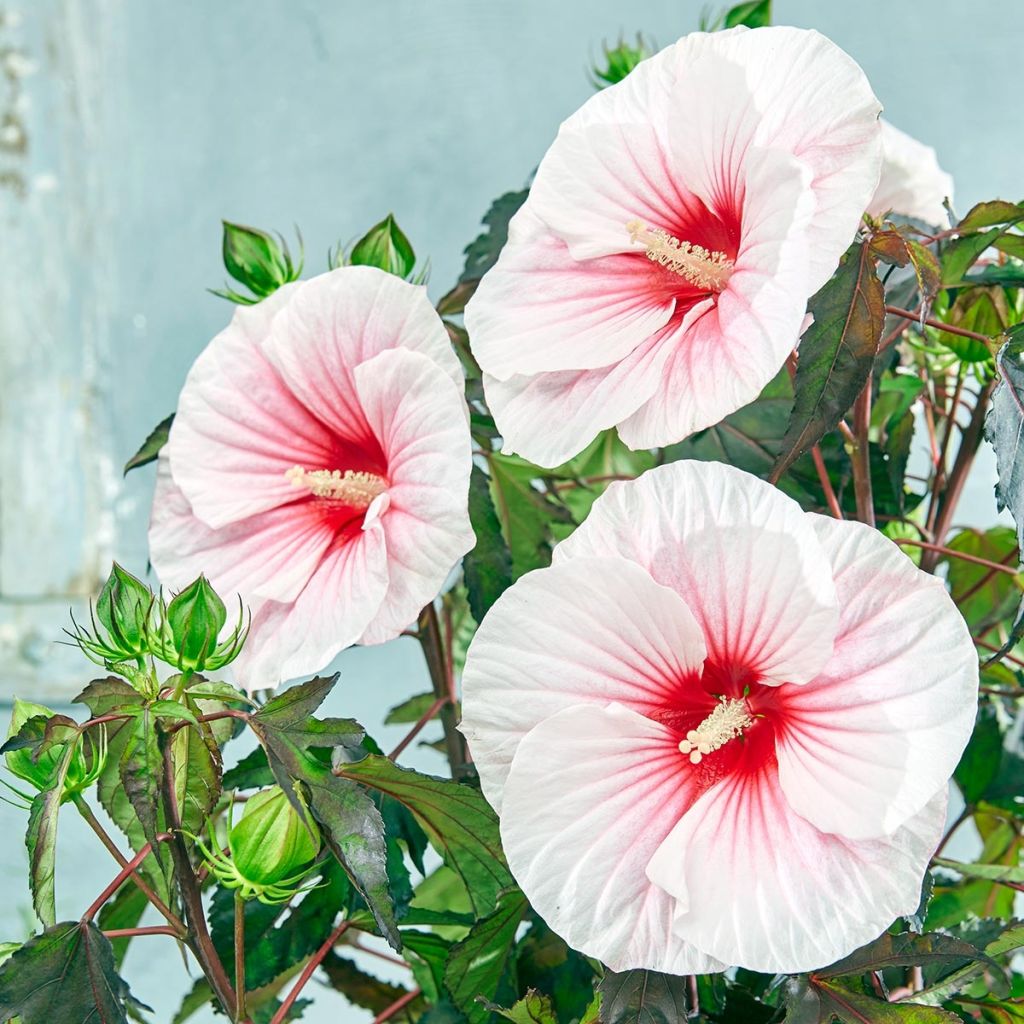

Hibiscus moscheutos Pink Candy - Swamp Rose Mallow
Hibiscus moscheutos Pink Candy - Swamp Rose Mallow
Hibiscus moscheutos Carrousel® 'Pink Candy TAHI11'
Swamp Rose Mallow, Eastern Rose Mallow, Crimsoneyed Rose Mallow, Marsh Hibiscus
Special offer!
Receive a €20 voucher for any order over €90 (excluding delivery costs, credit notes, and plastic-free options)!
1- Add your favorite plants to your cart.
2- Once you have reached €90, confirm your order (you can even choose the delivery date!).
3- As soon as your order is shipped, you will receive an email containing your voucher code, valid for 3 months (90 days).
Your voucher is unique and can only be used once, for any order with a minimum value of €20, excluding delivery costs.
Can be combined with other current offers, non-divisible and non-refundable.
Home or relay delivery (depending on size and destination)
Schedule delivery date,
and select date in basket
This plant carries a 24 months recovery warranty
More information
We guarantee the quality of our plants for a full growing cycle, and will replace at our expense any plant that fails to recover under normal climatic and planting conditions.
Would this plant suit my garden?
Set up your Plantfit profile →
Description
Hibiscus moscheutos 'Pink Candy' is a variety of rose mallow with large flowers of about 20 cm (7.9 in) in pale pink-white with a dark red to bright red heart, enhanced by a deep purple cut foliage. This tall perennial disappears every winter and regrows from the stump in spring to form a compact bush in just a few months. All summer long, its magnificent flowers in huge light pink cups, washed with candy pink in some places and with slightly frilled petals constantly renew themselves as long as the soil remains consistently moist. Its leaves are divided into narrow and pointed leaflets with widely toothed margins that take on a purple, almost black, hue, highlighting the red-purple veins and stems, making this ornamental plant attractive even when not in bloom! It is a species that thrives in warm and sunny locations with rich, well-drained and moist to wet soil. Use it to create temporary hedges with other marsh mallows, as a backdrop for a highly colourful flower bed by a pond, or plant them in multiple pots to dot the edges of a terrace.
Hibiscus moscheutos, also known as Hibiscus palustris, is a herbaceous plant with a woody stump belonging to the Malvaceae family, related to hollyhocks and mallows. It is native to marshes in the southern United States, where it can reach up to 2 m (6 ft 7 in) in height. Horticulturists have taken this astonishing botanical species and produced numerous very interesting cultivars, featuring larger flowers, various colours, and increased floribundity.
The 'Pink Candy' variety is a creation of Pépinière Fleurs du Sud and belongs to the Carousel range, which brings together hardy and floriferous rose mallow varieties with dark purple foliage that particularly enhances their huge single flowers. It forms a beautiful bushy clump that will quickly reach 1.2 m (3 ft 11 in) in height and 1 m (3 ft 4 in) in width in one season. This cultivar stands out with its pale pink to light pink flowers, splashed with candy pink and enhanced by a bright red to dark red heart and a pistil covered in cream stamens. They open as wide, single flowers, 20 cm (7.9 in) in diameter, with slightly crumpled petals. They are short-lived but constantly renew themselves from July to September. The stems and veins are red-purple, contrasting with its dark, nuanced foliage. The large leaves are divided into three narrow and pointed lobes with widely serrated margins, a dark purple colour, almost black with olive-green and bronze undertones, especially on the undersides, remaining highly ornamental throughout the growing season.
Rosse mallow plants are spectacular and never fail to leave an impression: some people dislike their huge flowers because they can be difficult to integrate into a natural setting, while others adore them for the same reasons that make them popular in contemporary gardens or in carefully arranged exotic scenes around a water feature or on a terrace. This superb plant may suffer in mountainous areas, although it is hardy enough to withstand temperatures as low as -15 °C (5 °F). All rose mallow varieties add another dimension to waterlogged flower beds or the edge of a pond, accompanied by Gunnera, cannas, arum lilies, Rodgersia Chocolate Wings, or Colocasia esculenta.
Report an error about the product description
Hibiscus moscheutos Pink Candy - Swamp Rose Mallow in pictures
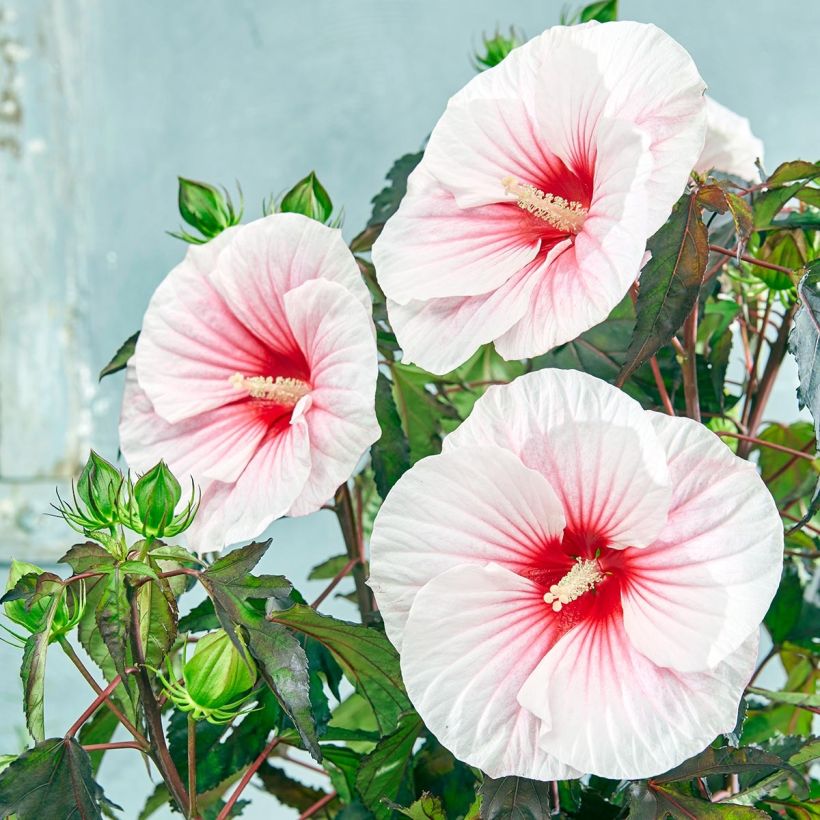

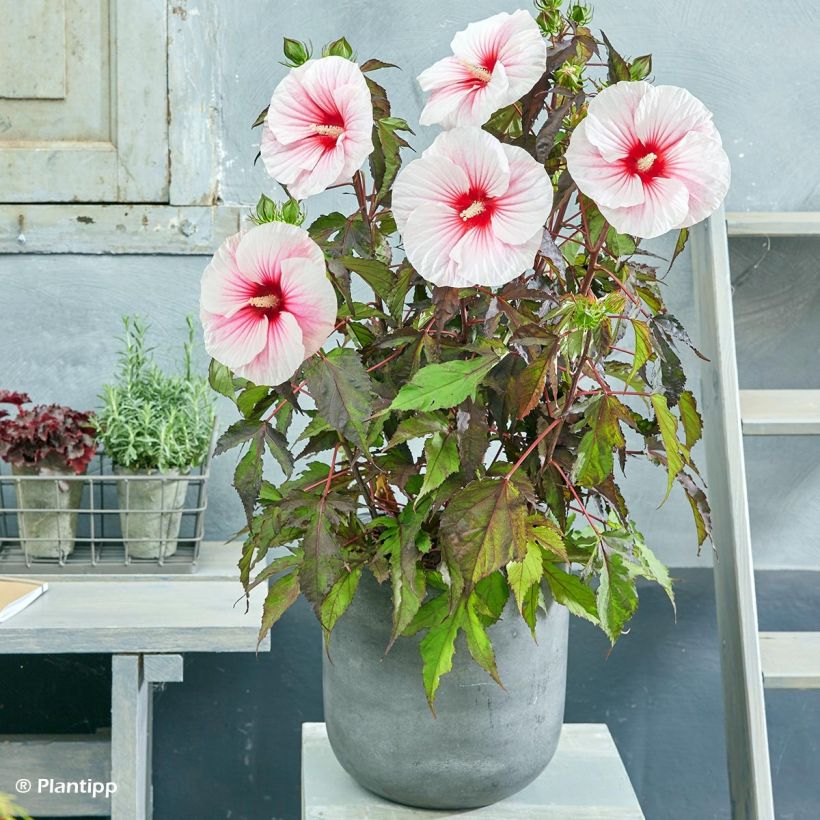

Plant habit
Flowering
Foliage
Botanical data
Hibiscus
moscheutos
Carrousel® 'Pink Candy TAHI11'
Malvaceae
Swamp Rose Mallow, Eastern Rose Mallow, Crimsoneyed Rose Mallow, Marsh Hibiscus
Cultivar or hybrid
Other Hibiscus
View all →Planting and care
Especially known for their shrubby forms, the moscheutos species offered here demonstrates that this Hibiscus genus also behaves like perennials, with all above-ground parts disappearing in winter. These marsh plants bring an exotic touch to the garden: an effect that can be enhanced by planting them alongside Hardy Hibiscus or banana plants in a rich and moist soil, in a warm location. While they are hardy (down to -15 °C (5 °F)) in our garden, they do require winter protection in colder climates.
To create a mass planting: dig a 40 cm (15.7 in) hole in all directions, lined with a waterproof film and filled with a mixture of good garden soil and fertiliser. Maintain a permanently swampy moisture level during the shoot and flowering period. As soon as the leaves turn yellow in October, simply keep the soil moist. Trim the stems to 5 cm (2 in) above the ground at the end of autumn. Growth restarts late in spring, in April-May depending on the climate.
Planting period
Intended location
Care
This item has not been reviewed yet - be the first to leave a review about it.
Similar products
Haven't found what you were looking for?
Hardiness is the lowest winter temperature a plant can endure without suffering serious damage or even dying. However, hardiness is affected by location (a sheltered area, such as a patio), protection (winter cover) and soil type (hardiness is improved by well-drained soil).

Photo Sharing Terms & Conditions
In order to encourage gardeners to interact and share their experiences, Promesse de fleurs offers various media enabling content to be uploaded onto its Site - in particular via the ‘Photo sharing’ module.
The User agrees to refrain from:
- Posting any content that is illegal, prejudicial, insulting, racist, inciteful to hatred, revisionist, contrary to public decency, that infringes on privacy or on the privacy rights of third parties, in particular the publicity rights of persons and goods, intellectual property rights, or the right to privacy.
- Submitting content on behalf of a third party;
- Impersonate the identity of a third party and/or publish any personal information about a third party;
In general, the User undertakes to refrain from any unethical behaviour.
All Content (in particular text, comments, files, images, photos, videos, creative works, etc.), which may be subject to property or intellectual property rights, image or other private rights, shall remain the property of the User, subject to the limited rights granted by the terms of the licence granted by Promesse de fleurs as stated below. Users are at liberty to publish or not to publish such Content on the Site, notably via the ‘Photo Sharing’ facility, and accept that this Content shall be made public and freely accessible, notably on the Internet.
Users further acknowledge, undertake to have ,and guarantee that they hold all necessary rights and permissions to publish such material on the Site, in particular with regard to the legislation in force pertaining to any privacy, property, intellectual property, image, or contractual rights, or rights of any other nature. By publishing such Content on the Site, Users acknowledge accepting full liability as publishers of the Content within the meaning of the law, and grant Promesse de fleurs, free of charge, an inclusive, worldwide licence for the said Content for the entire duration of its publication, including all reproduction, representation, up/downloading, displaying, performing, transmission, and storage rights.
Users also grant permission for their name to be linked to the Content and accept that this link may not always be made available.
By engaging in posting material, Users consent to their Content becoming automatically accessible on the Internet, in particular on other sites and/or blogs and/or web pages of the Promesse de fleurs site, including in particular social pages and the Promesse de fleurs catalogue.
Users may secure the removal of entrusted content free of charge by issuing a simple request via our contact form.
The flowering period indicated on our website applies to countries and regions located in USDA zone 8 (France, the United Kingdom, Ireland, the Netherlands, etc.)
It will vary according to where you live:
- In zones 9 to 10 (Italy, Spain, Greece, etc.), flowering will occur about 2 to 4 weeks earlier.
- In zones 6 to 7 (Germany, Poland, Slovenia, and lower mountainous regions), flowering will be delayed by 2 to 3 weeks.
- In zone 5 (Central Europe, Scandinavia), blooming will be delayed by 3 to 5 weeks.
In temperate climates, pruning of spring-flowering shrubs (forsythia, spireas, etc.) should be done just after flowering.
Pruning of summer-flowering shrubs (Indian Lilac, Perovskia, etc.) can be done in winter or spring.
In cold regions as well as with frost-sensitive plants, avoid pruning too early when severe frosts may still occur.
The planting period indicated on our website applies to countries and regions located in USDA zone 8 (France, United Kingdom, Ireland, Netherlands).
It will vary according to where you live:
- In Mediterranean zones (Marseille, Madrid, Milan, etc.), autumn and winter are the best planting periods.
- In continental zones (Strasbourg, Munich, Vienna, etc.), delay planting by 2 to 3 weeks in spring and bring it forward by 2 to 4 weeks in autumn.
- In mountainous regions (the Alps, Pyrenees, Carpathians, etc.), it is best to plant in late spring (May-June) or late summer (August-September).
The harvesting period indicated on our website applies to countries and regions in USDA zone 8 (France, England, Ireland, the Netherlands).
In colder areas (Scandinavia, Poland, Austria...) fruit and vegetable harvests are likely to be delayed by 3-4 weeks.
In warmer areas (Italy, Spain, Greece, etc.), harvesting will probably take place earlier, depending on weather conditions.
The sowing periods indicated on our website apply to countries and regions within USDA Zone 8 (France, UK, Ireland, Netherlands).
In colder areas (Scandinavia, Poland, Austria...), delay any outdoor sowing by 3-4 weeks, or sow under glass.
In warmer climes (Italy, Spain, Greece, etc.), bring outdoor sowing forward by a few weeks.

































